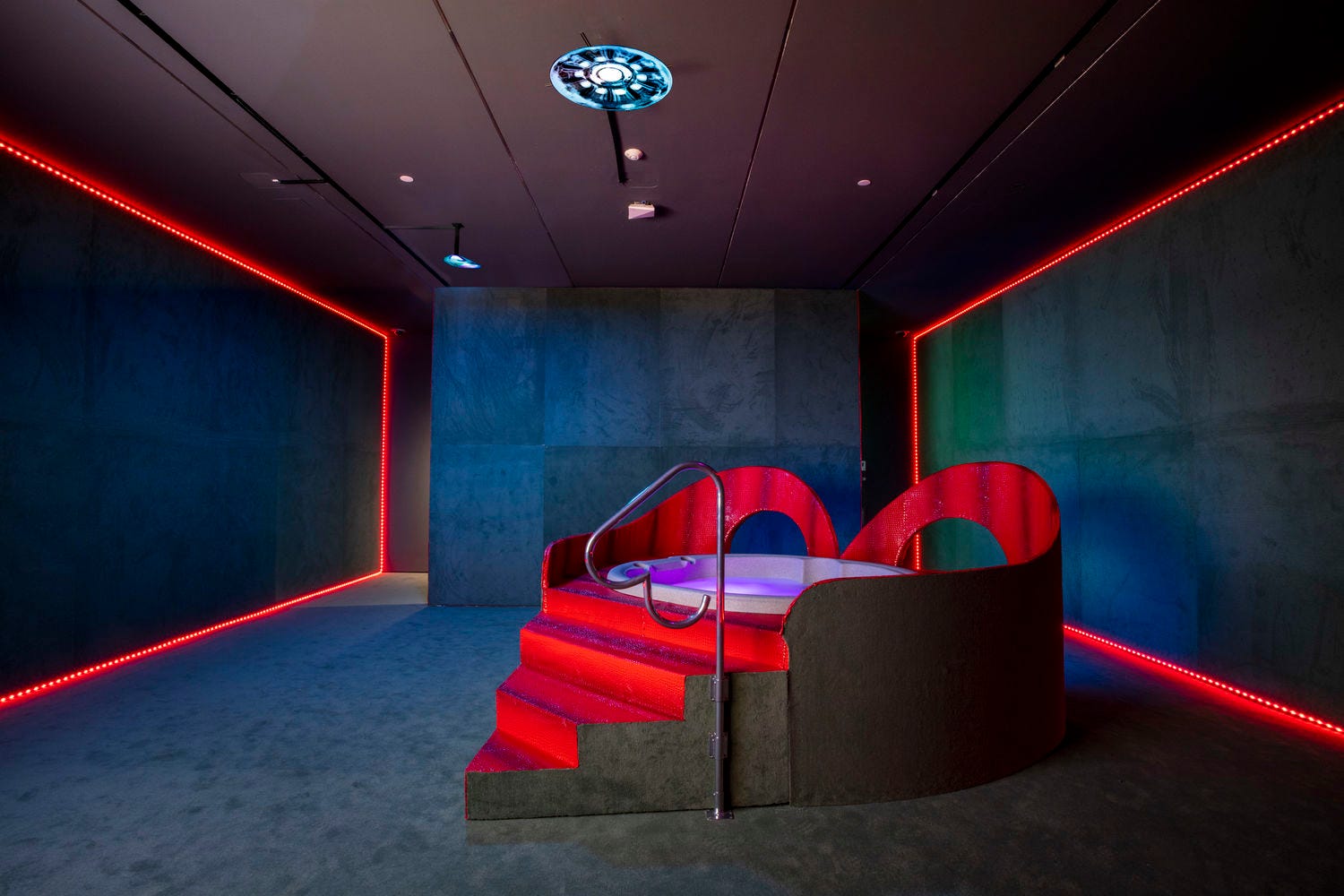Hammer Projects: Tita Cicognani (Capsule Review)


[Original publication: No Proscenium, 9/7/22]
I recently made a reservation. Not for dinner at a restaurant or a stay at a hotel. I booked a reservation, for a hot tub, in an art museum.
An embellished version of the classic motel novelty, Tita Cicognani’s Heart Tub is fully functional and adorned with purple lighting, champagne cradle, heart-shaped railing, and a crocodile-embossed red stairway. The installation also includes video, sound, projections, towel station, and a changing area.
Get Laura Hess’s stories in your inbox
Join Medium for free to get updates from this writer.
SubscribeSubscribe
Bathers relax amidst the froth and jets while watching an animated short film. Set inside a fantastically generic hotel room, the film also centers around a heart-shaped hot tub. Together, the physical and digital tubs become otherworldly portals into public intimacy and private connection.
Heart Tub is Cicognani’s third iteration and the first one installed in an institution. The Hammer Museum’s program notes include references to other participatory art installations set in similar environments such as saunas and pools. Those installations preceded the pandemic while Cicognani first produced this work in 2021 at ArtCenter College of Design’s MFA program. Covid acclimatization renders this experience strange — and strangely familiar.
In recent years, our spaces have publicly contracted and privately expanded. Digital places adopted a shared-contained hybrid quality we’ve grown accustomed to. Some physical places now seem disproportionate and spatially awkward, as though they’re less real than virtual backdrops.
This environmental disorientation and public-private inversion is perfectly leveraged by Cicognani. Physically immersed in its chlorinated waters, participants become part of the artwork; while they observe the film they are also on display for other viewers. Reservations are required for the tub, but the entire installation is open to the public during museum hours.
Voyeuristic works have long been a cultural mainstay (often utilizing glass enclosures): Tilda Swinton napped her way through art institutions in London, Rome, and New York; “box girls” ignored guests at West Hollywood’s Standard Hotel; and office workers “became zoo animals,” courtesy of the advertising giant Wieden+Kennedy.
Capitalizing on our Covid sensibilities, Cicognani removes barriers (glass or otherwise) between the observer and the observed. Both roles are empowering and vulnerable; they also feel interchangeable. After my reservation, I later returned to the room. Two people lounged in the tub, chatting away. Maneuvering about the space, I leaned into the humidity and joined the duo’s chatter, as they sat in a heart-shaped hot tub, in an art museum, as though it was the most natural thing in the world.